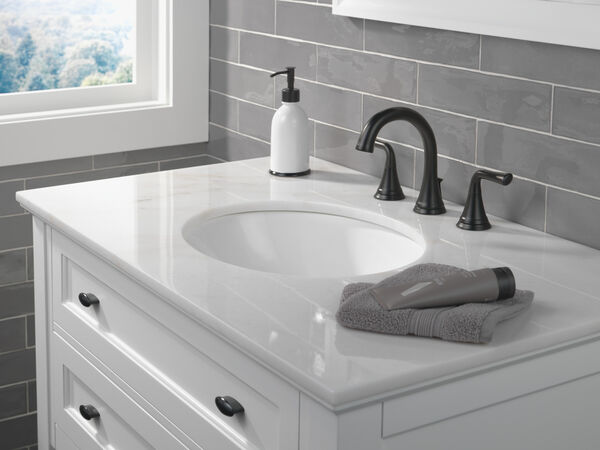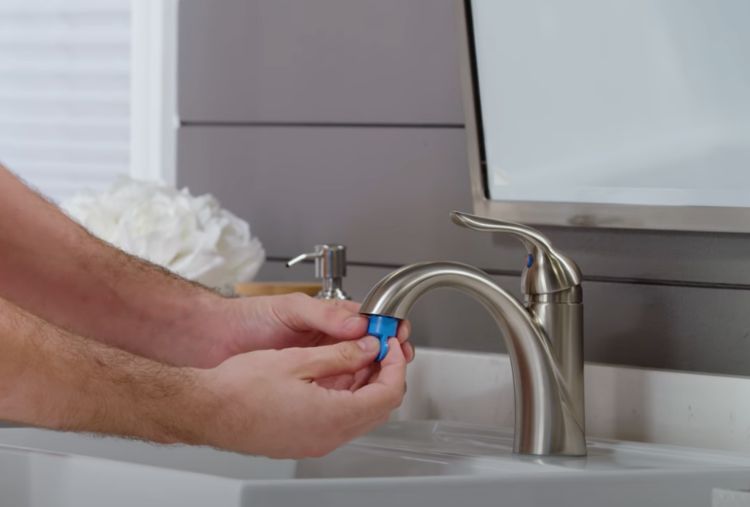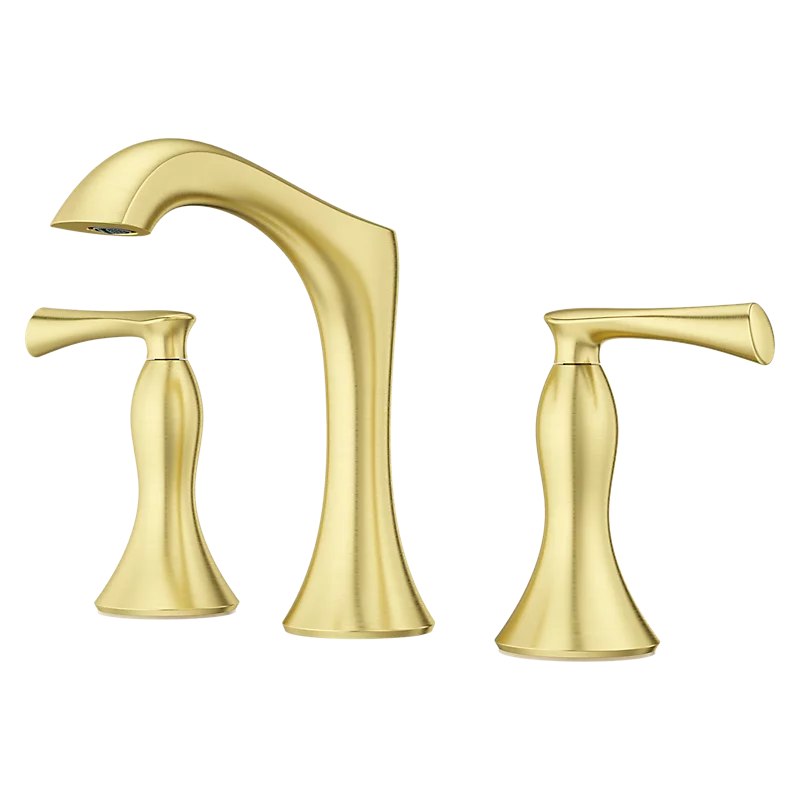Here’s the Easiest Way to Fix a Leaky Faucet
(thanks Delta)

Even the smallest of faucet leaks can have a major impact, wasting up to three gallons of water a day. For the sake of your water bill (and our planet!), it’s time to fix that drip. While a plumber is an easy go-to solution, doing it yourself isn’t as daunting as you think.
The culprit is usually a failure of the faucet’s seats and springs—rest assured, this is a relatively simple DIY fix. Here’s how. You can also watch the how-to video here.
This repair will work for kitchen faucets, bathroom faucets and tub/shower valves but will only work for faucets with a ball valve assembly (seats and springs)—not DIAMOND Seal Technology faucets.

What You’ll Need to Repair the Faucet:
- 1/8-inch Allen wrench
- Needle-nose pliers
- Tongue-and-groove pliers
- Screwdriver
- Replacement parts (If you have a lever-handle style product, you need RP61; if you have a knob handle you need RP188.)
How to Easily Fix a Dripping Faucet
1. Shut off both the hot and cold water supply valves underneath your sink. Turn on the faucet and let the last of the water trickle out to completely drain the water lines.
.jpg)
2. To remove the handle, take off the screw cover; use a screwdriver or Allen wrench to remove the screw. Lift off the handle.
.jpg)
3. Depending on the age of your faucet, you may not have an adjusting ring. For those with newer faucets that don’t contain adjusting rings, please skip this step. If you have an older faucet with an adjusting ring, it will not be needed after the repair if the cam/packing is replaced.
Investigate the cap and adjusting ring by taking a good look. If the faucet seems to be leaking from there, try tightening the adjusting ring with needle-nose pliers. If that doesn’t stop the leak, you’ll need to replace the faucet’s seats and springs.
.jpg)
4. Unscrew and remove the adjusting ring. Then, unscrew the dome-shaped cap by placing a cloth over the cap for grip and using tongue-and-groove pliers to unscrew it. Be careful: Use too much pressure to remove the cap and it may bend.
.jpg)
If your cam and packing are black and white like this, you have an older faucet model. The new cam and packing are gray.
5. Pull out the round metal stem; when you do, you’ll remove the ball, as well as the piece called the “cam and packing.” If your faucet’s leaking from here, replacing the cam and packing should resolve the problem.
.jpg)
6. Look into the valve and you’ll see a small mechanism called the “seats and springs.” The “seat” is the small circular part, and the “spring” is beneath the seat. Use the Allen wrench to pry out the seats and springs for both the hot and the cold water.
7. Before putting the faucet together again, remove the aerator and turn on both the hot and cold water all the way to flush the lines. The water needs to run for one minute. For kitchen & bathroom faucets, be sure to put a bucket upside down over top of the faucet in order to direct the water down to the sink, or water will spray everywhere.
Turn the water off at the supply lines again before re-assembling.
.jpg)
8. Insert a new set of seats and springs into the holes. Thread one set onto the Allen wrench through the flat side of the seat, then through the skinny end of the spring. Use the wrench to tip the seat and spring into its hole in the valve. Repeat on the other set.
.jpg)
9. Replace the ball assembly, aligning the pin and the valve to the slot on the ball.
.jpg)
10. Replace the cam and packing, aligning the tab on the cam with the slot on the valve.
.jpg)
11. Gently screw the cap on the valve using only your hand. Replace the adjusting ring and tighten with needle-nose pliers. Reinstall the handle.
.jpg)
12. Turn on the water to ensure you’ve fixed the leak.



.jpg)


